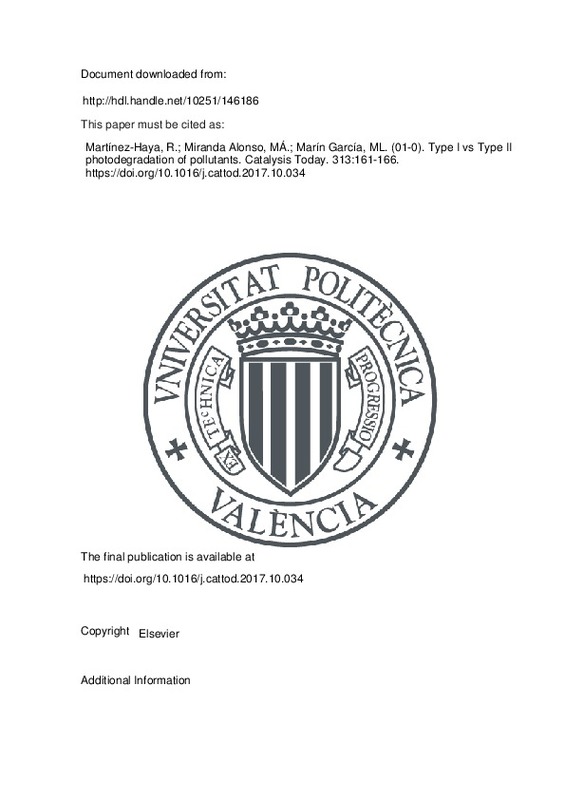JavaScript is disabled for your browser. Some features of this site may not work without it.
Buscar en RiuNet
Listar
Mi cuenta
Estadísticas
Ayuda RiuNet
Admin. UPV
Type I vs Type II photodegradation of pollutants
Mostrar el registro completo del ítem
Martínez-Haya, R.; Miranda Alonso, MÁ.; Marín García, ML. (2018). Type I vs Type II photodegradation of pollutants. Catalysis Today. 313:161-166. https://doi.org/10.1016/j.cattod.2017.10.034
Por favor, use este identificador para citar o enlazar este ítem: http://hdl.handle.net/10251/146186
Ficheros en el ítem
Metadatos del ítem
| Título: | Type I vs Type II photodegradation of pollutants | |
| Autor: | ||
| Entidad UPV: |
|
|
| Fecha difusión: |
|
|
| Resumen: |
[EN] Rose Bengal (RB) is a widely used photocatalyst due to its high quantum yield of singlet oxygen (O-1(2)) formation. Hence, when RB has been employed for wastewater remediation, the observed photodegradation has been ...[+]
|
|
| Palabras clave: |
|
|
| Derechos de uso: | Reconocimiento - No comercial - Sin obra derivada (by-nc-nd) | |
| Fuente: |
|
|
| DOI: |
|
|
| Editorial: |
|
|
| Versión del editor: | https://doi.org/10.1016/j.cattod.2017.10.034 | |
| Título del congreso: |
|
|
| Lugar del congreso: |
|
|
| Fecha congreso: |
|
|
| Código del Proyecto: |
|
|
| Agradecimientos: |
Financial support from Spanish Government (Grants SEV-2016-0683 and CTQ2012-38754-C03-03) and Generalitat Valenciana (Prometeo Program) is gratefully acknowledged. We also thank support from VLC/Campus. R. Martinez-Haya ...[+]
|
|
| Tipo: |
|







![[Cerrado]](/themes/UPV/images/candado.png)


